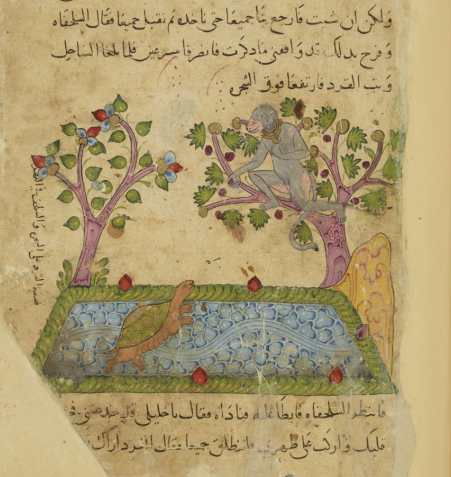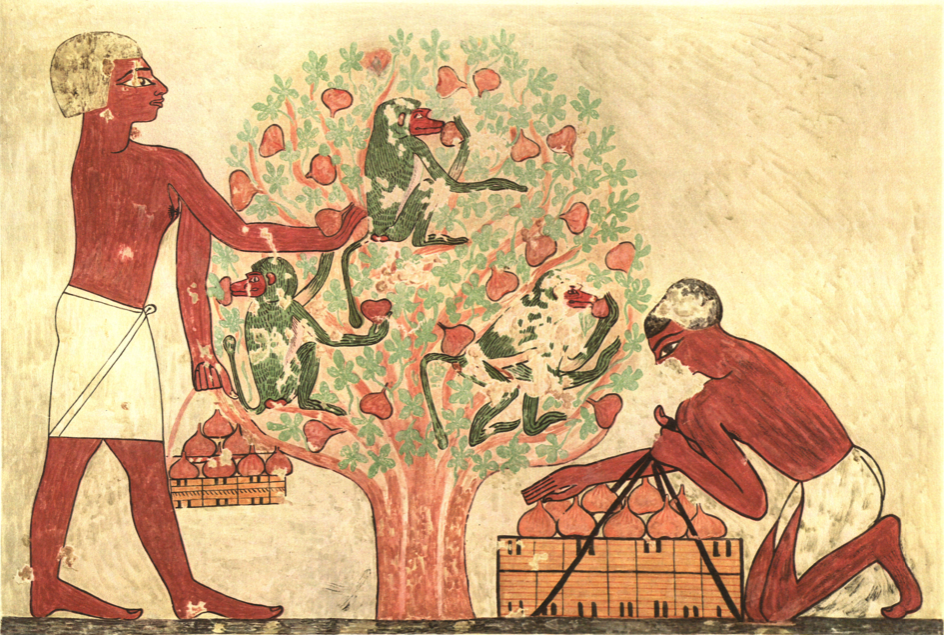One of the most important fruits in the eastern Mediterranean, the fig (Ficus carica) originally hailed from Western Asia but very early on travelled westwards. The fruit was already collected by humans by about 8000 BCE across a vast area, from southern France to Iran. It was a staple in the Ancient Mesopotamian diet, both dried and fresh. Dried figs (together with dates and raisins) were used in the making of a kind of wine, as well as in a fruity bread.
Figs were very popular in Ancient Egypt, too, where cultivation probably started in the fourth millennium BCE. Ancient Egyptians used it especially in breads and cakes, some of which were made entirely out of the fruit, as evidenced by the bread preserved at the Museum of Fine Arts in Boston. It may well be the most represented fruit in tomb reliefs and paintings, some of which show monkeys picking the fruits. Interestingly enough, this practice must have been known across a wide area as shown in the famous story about the monkey and the tortoise in the Persian collection of parables entitled Kalila wa Dimna, where the two protagonists meet when the monkey throws figs at the tortoise who greedily eats them. The practice may well go back to India, which also happens to be the birthplace of the parables, which were first written in Sanskrit before being translated into Persian and then into Arabic.
The ancient Greeks grealy enjoyed eating figs, too, and also used the tree sap as rennet in cheese making. The Romans, so Apicius informs us, made fig wine, and also preserved them in honey, alongside other fruit such as apples, plums, pears, and cherries. He further mentions fig-braised ham as well as a more gruesome fig-fed pork liver dish which used the liver of pigs force-fed with figs which was then cooked in a wine sauce and spices.
In Muslim culture, figs were considered the most nutritious of all fruit. They came in many varieties, but the fresh, peeled white (or yellow) type was thought to be the best. Both the fruit and the leaves were used in medicine, and Muslim physicians recommended figs as a diuretic, appetizer, laxative, antidote for poisons, and aphrodisiac (especially fresh ones). The fruit appears in the title of a chapter (sura) in the Qur’an, as well as in a large number of hadiths (sayings of the Prophet Muhammad), the most famous of which states that the Prophet considered it descended from paradise.
Surprisingly, in spite of this high praise figs appear extremely rarely in the cookery books, and there are several that do not mention figs at all. In the earliest cookery book (10th c.), (dried) figs are called for in a vinegar stew, while a later (13thc.) Egyptian manual adds a fenugreek halva that requires it. Another one (14thc.) — also from Egypt — contains a few recipes for preserving figs, one of which involves submerging them in a liquid made with chard and fig juice. Fig leaves were also used in the making of murrī (a condiment), whereas an Andalusian cookbook contains a recipe for a fig vinegar.


